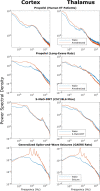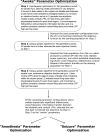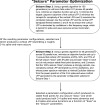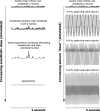Criticality supports cross-frequency cortical-thalamic information transfer during conscious states
- PMID: 38180472
- PMCID: PMC10805384
- DOI: 10.7554/eLife.86547
Criticality supports cross-frequency cortical-thalamic information transfer during conscious states
Abstract
Consciousness is thought to be regulated by bidirectional information transfer between the cortex and thalamus, but the nature of this bidirectional communication - and its possible disruption in unconsciousness - remains poorly understood. Here, we present two main findings elucidating mechanisms of corticothalamic information transfer during conscious states. First, we identify a highly preserved spectral channel of cortical-thalamic communication that is present during conscious states, but which is diminished during the loss of consciousness and enhanced during psychedelic states. Specifically, we show that in humans, mice, and rats, information sent from either the cortex or thalamus via δ/θ/α waves (∼1-13 Hz) is consistently encoded by the other brain region by high γ waves (52-104 Hz); moreover, unconsciousness induced by propofol anesthesia or generalized spike-and-wave seizures diminishes this cross-frequency communication, whereas the psychedelic 5-methoxy-N,N-dimethyltryptamine (5-MeO-DMT) enhances this low-to-high frequency interregional communication. Second, we leverage numerical simulations and neural electrophysiology recordings from the thalamus and cortex of human patients, rats, and mice to show that these changes in cross-frequency cortical-thalamic information transfer may be mediated by excursions of low-frequency thalamocortical electrodynamics toward/away from edge-of-chaos criticality, or the phase transition from stability to chaos. Overall, our findings link thalamic-cortical communication to consciousness, and further offer a novel, mathematically well-defined framework to explain the disruption to thalamic-cortical information transfer during unconscious states.
Keywords: anesthesia; consciousness; criticality; epilepsy; human; mouse; neuroscience; physics of living systems; psychedelic; rat; thalamus.
Conflict of interest statement
DT, EM, HM, MR, LL, KY, FA, JS, AH, NP, MM No competing interests declared
Figures





















Update of
- doi: 10.1101/2023.02.22.529544
References
-
- An Z, Lin Q, Yang L. Cross-frequency communication: Near-field identification of uhf rfids with wifi. Proceedings of the 24th Annual International Conference on Mobile Computing and Networking.2018.
-
- Armand Eyebe Fouda JS, Bodo B, Sabat SL, Effa JY. A modified 0-1 test for chaos detection in oversampled time series observations. International Journal of Bifurcation and Chaos. 2014;24:1450063. doi: 10.1142/S0218127414500631. - DOI

